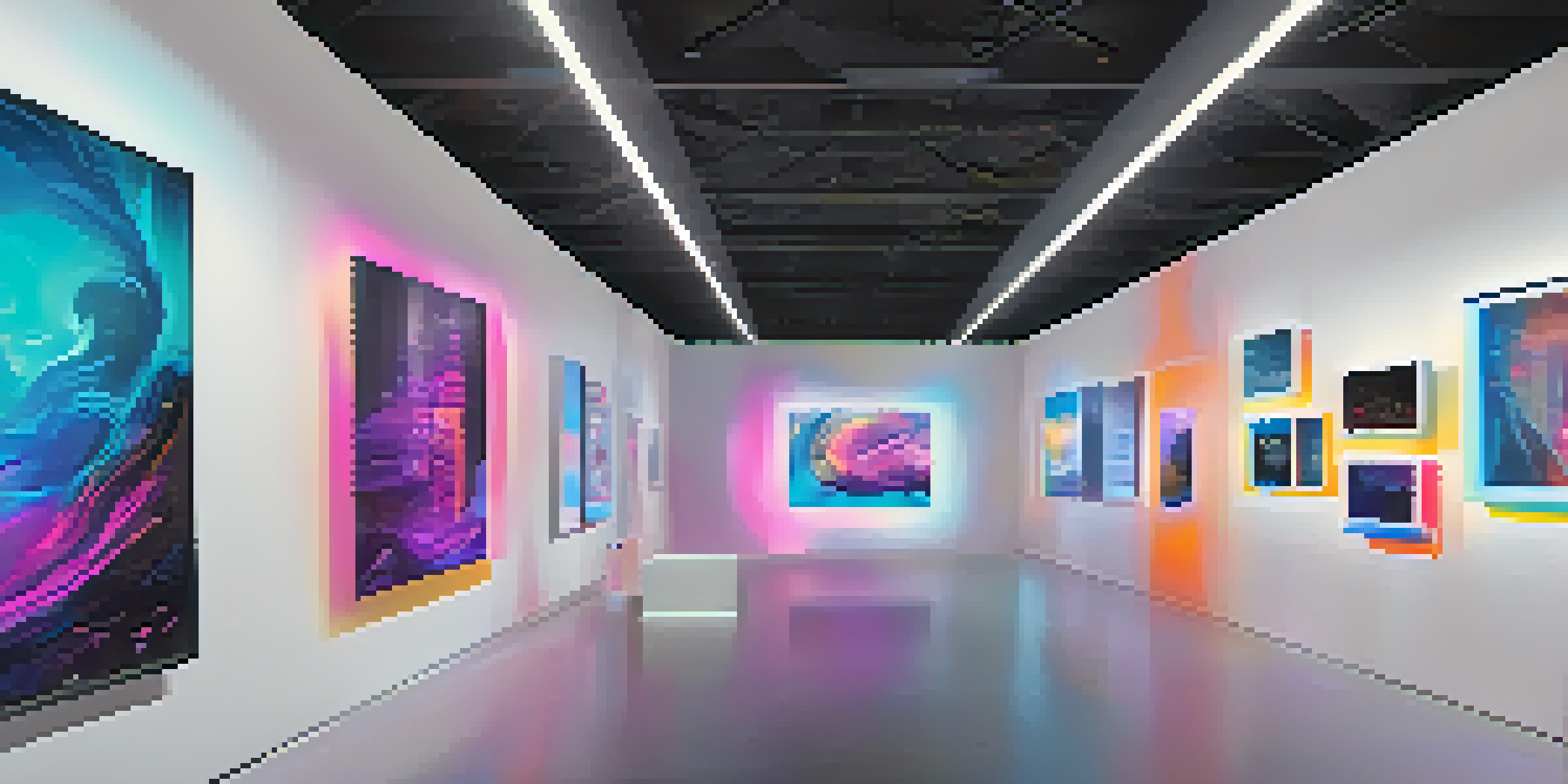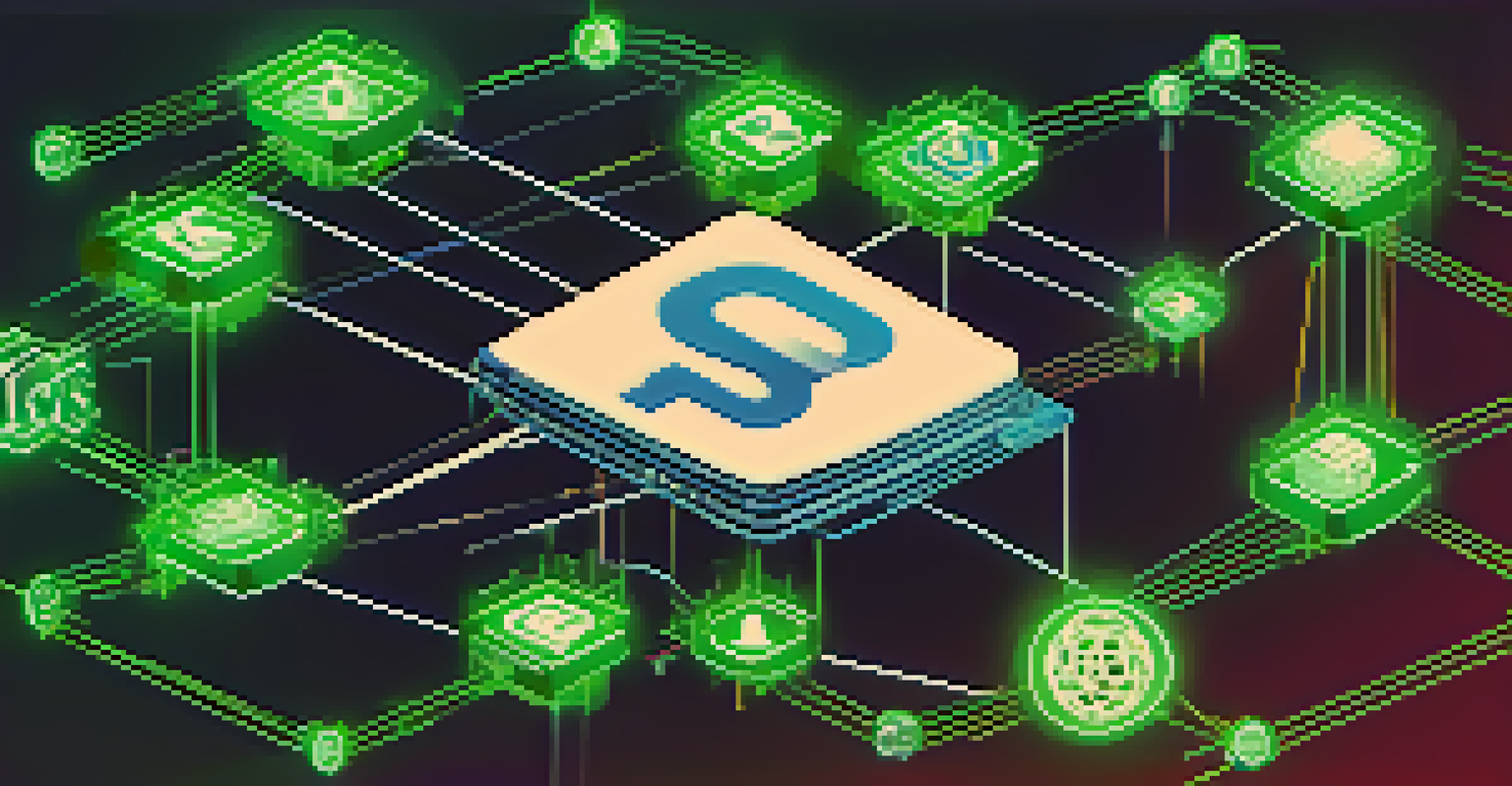The Impact of Blockchain Technology on NFT Marketplaces

Understanding Blockchain and NFTs: A Quick Overview
Blockchain is a decentralized digital ledger that records transactions across many computers. This technology underpins cryptocurrencies and has found a unique application in the world of NFTs, or non-fungible tokens. NFTs are digital assets that represent ownership of a unique item or piece of content, like art, music, or virtual real estate.
Blockchain technology is not just a technology; it's a new way of doing things that can change how we think about ownership and trust.
The combination of blockchain and NFTs ensures that each token is one-of-a-kind and cannot be replicated, providing a sense of authenticity and ownership. This is crucial in a digital world where copying is easy and often done without permission. By leveraging blockchain, creators can prove their ownership and control over their digital creations.
In essence, understanding the synergy between blockchain and NFTs is essential for grasping the broader impact on marketplaces and how they operate. This foundational knowledge sets the stage for exploring the transformative effects of blockchain technology on NFT marketplaces.
How Blockchain Ensures Transparency in NFT Transactions
One of the most significant benefits of blockchain technology is its transparency. Every transaction made on a blockchain is recorded in a public ledger, accessible to anyone. This means that buyers can see the entire transaction history of an NFT, including previous owners, which adds a layer of trust to the purchasing process.

Imagine buying a vintage car. You’d want to know its history—previous owners, accidents, and repairs. Similarly, in the NFT space, transparency allows collectors to make informed decisions. They can verify the authenticity and provenance of an NFT before making a purchase, reducing the risk of fraud.
Blockchain Ensures NFT Authenticity
The use of blockchain technology guarantees that each NFT is unique and verifiable, enhancing ownership and trust in digital assets.
This transparency not only protects buyers but also fosters a more trustworthy environment for creators and sellers. With clearer transaction histories, the NFT marketplace can flourish, attracting more participants who feel secure in their investments.
Decentralization: Empowering Creators and Collectors Alike
Blockchain technology operates on a decentralized network, meaning there is no single point of control. This decentralization empowers creators by allowing them to sell their NFTs directly to collectors without the need for intermediaries, such as galleries or auction houses. This can lead to higher earnings for artists, as they retain more of the sale proceeds.
The future of the internet is decentralized, and NFTs are a key part of that narrative, empowering creators and collectors alike.
For collectors, this means greater access to a diverse range of artworks and digital assets. Instead of being limited to traditional platforms, they can explore various NFT marketplaces that may cater to niche interests or specific communities. This increased accessibility can fuel creativity and innovation in the digital art space.
Ultimately, decentralization shifts the power dynamics in the marketplace. It creates a more level playing field where artists and collectors can engage directly, fostering a vibrant ecosystem for digital creativity.
Smart Contracts: Automating Transactions and Rights Management
Smart contracts are self-executing contracts with the terms of the agreement directly written into code. In the context of NFTs, they automate transactions and enforce agreements without the need for intermediaries. For example, a smart contract can automatically transfer ownership of an NFT once the agreed payment is received.
This automation not only streamlines the buying and selling process but also ensures that creators receive royalties every time their NFT is resold. This is a game-changer for artists, as it allows them to benefit from the ongoing value of their work in a way that traditional art sales often do not.
Decentralization Empowers Creators
With a decentralized network, artists can sell their NFTs directly to collectors, increasing their earnings and fostering creativity.
By incorporating smart contracts into NFT transactions, the marketplace becomes more efficient and fair. Everyone involved can trust that the terms will be honored, which enhances the overall experience for both creators and collectors.
The Role of Interoperability in NFT Marketplaces
Interoperability refers to the ability of different blockchain networks and NFT marketplaces to communicate and work together. This is crucial for the growth of the NFT ecosystem, as it allows assets to be transferred across various platforms seamlessly. For example, a digital artwork purchased on one marketplace could be sold or displayed on another without any hassle.
Imagine being able to wear your favorite digital outfit from one game in another virtual world. Interoperability opens up exciting possibilities, enabling collectors to showcase their NFTs in multiple environments and communities. This not only enhances the value of the NFTs but also encourages collaboration between different platforms.
As more marketplaces embrace interoperability, the NFT landscape will continue to evolve, creating a richer and more engaging experience for users. This connectivity can drive innovation and expand the audience for NFTs, making them more mainstream.
Challenges Facing NFT Marketplaces Due to Blockchain Tech
While blockchain technology has brought numerous benefits to NFT marketplaces, it also comes with its share of challenges. One major issue is scalability, as many blockchain networks struggle to handle a high volume of transactions simultaneously. This can lead to slow processing times and increased fees, deterring potential buyers.
Additionally, the environmental impact of blockchain technology, particularly proof-of-work systems, has raised concerns. The energy consumption associated with mining and transaction verification can be significant, leading to debates about the sustainability of NFT marketplaces. As more people engage with NFTs, finding eco-friendly solutions becomes increasingly important.
Interoperability Enhances NFT Value
The ability for different NFT marketplaces to work together allows for seamless transfer and display of assets, enriching the user experience.
These challenges underscore the need for ongoing innovation and adaptation within the NFT space. By addressing scalability and environmental concerns, the industry can continue to grow while ensuring a positive impact on the planet.
The Future of NFT Marketplaces in a Blockchain-Driven World
As blockchain technology continues to evolve, the future of NFT marketplaces looks promising. We can expect advancements that enhance user experiences, such as more intuitive interfaces, improved security features, and faster transaction times. These developments will likely attract a broader audience, from casual collectors to serious investors.
Moreover, the integration of augmented reality (AR) and virtual reality (VR) could redefine how we interact with NFTs. Imagine attending a virtual gallery where you can experience digital art in immersive environments. This could elevate the value and appeal of NFTs, making them more desirable than ever.

Ultimately, the future of NFT marketplaces will hinge on their ability to adapt to emerging technologies and user needs. By leveraging blockchain's capabilities, these marketplaces can create innovative experiences that keep pace with the ever-changing digital landscape.